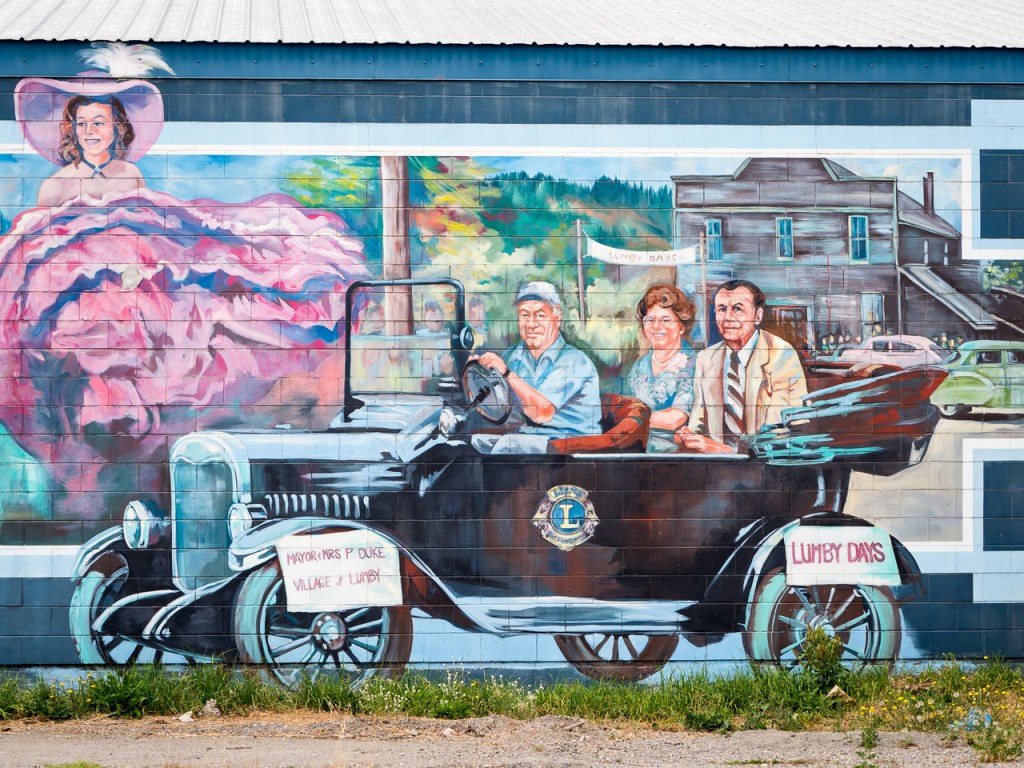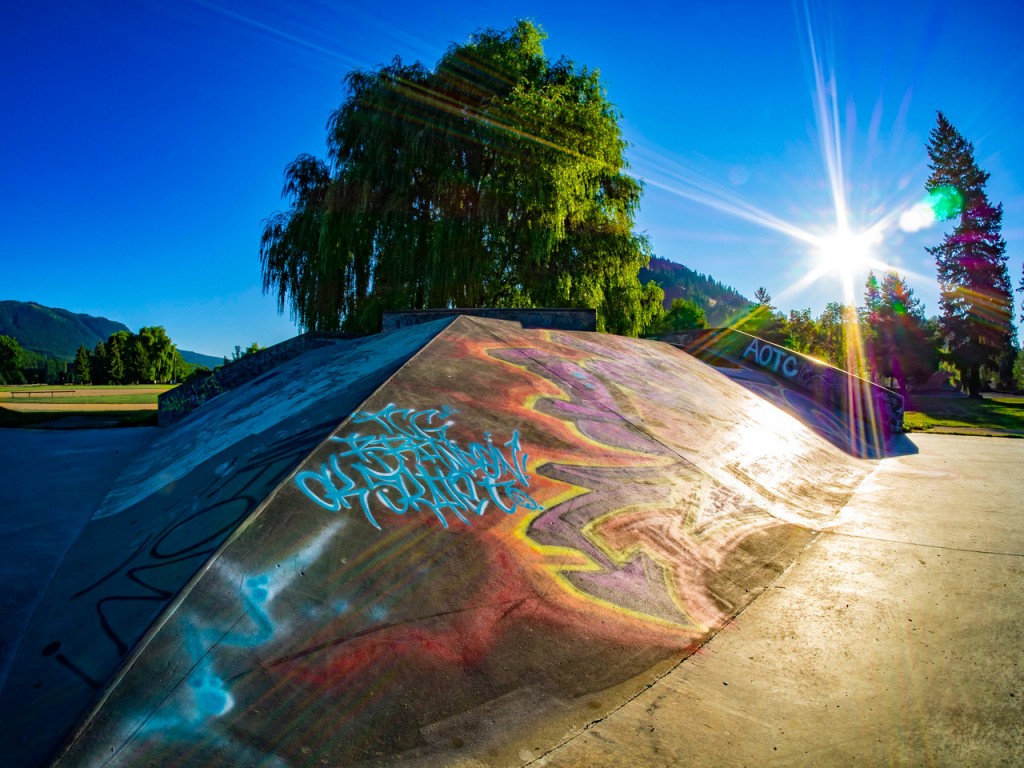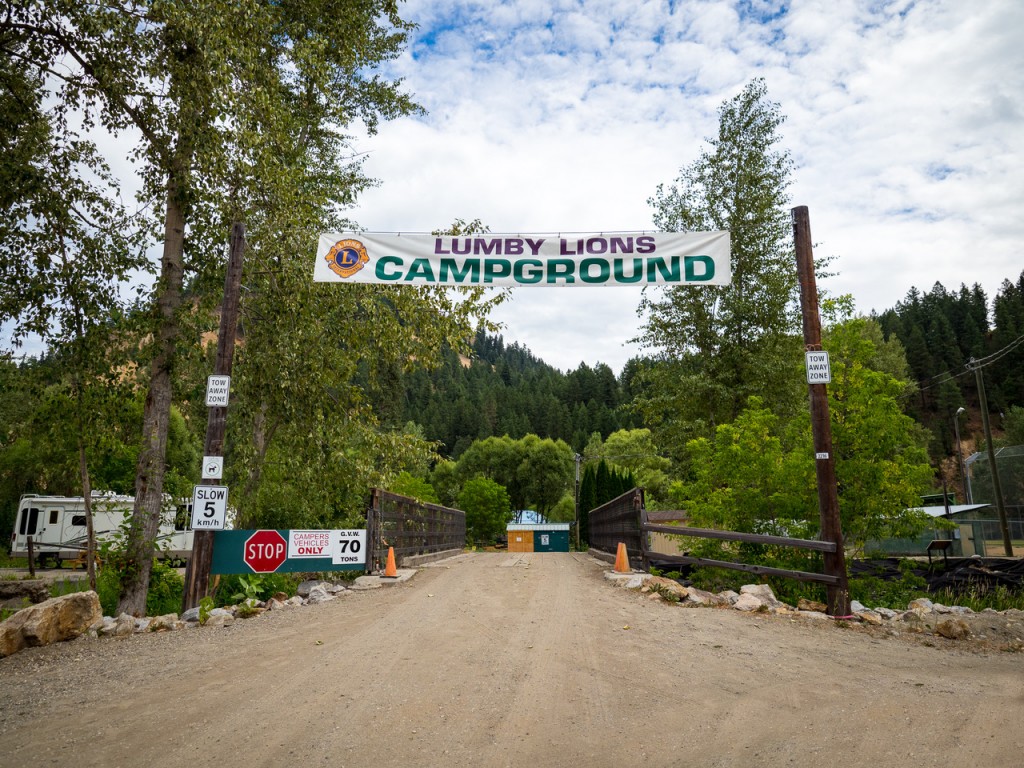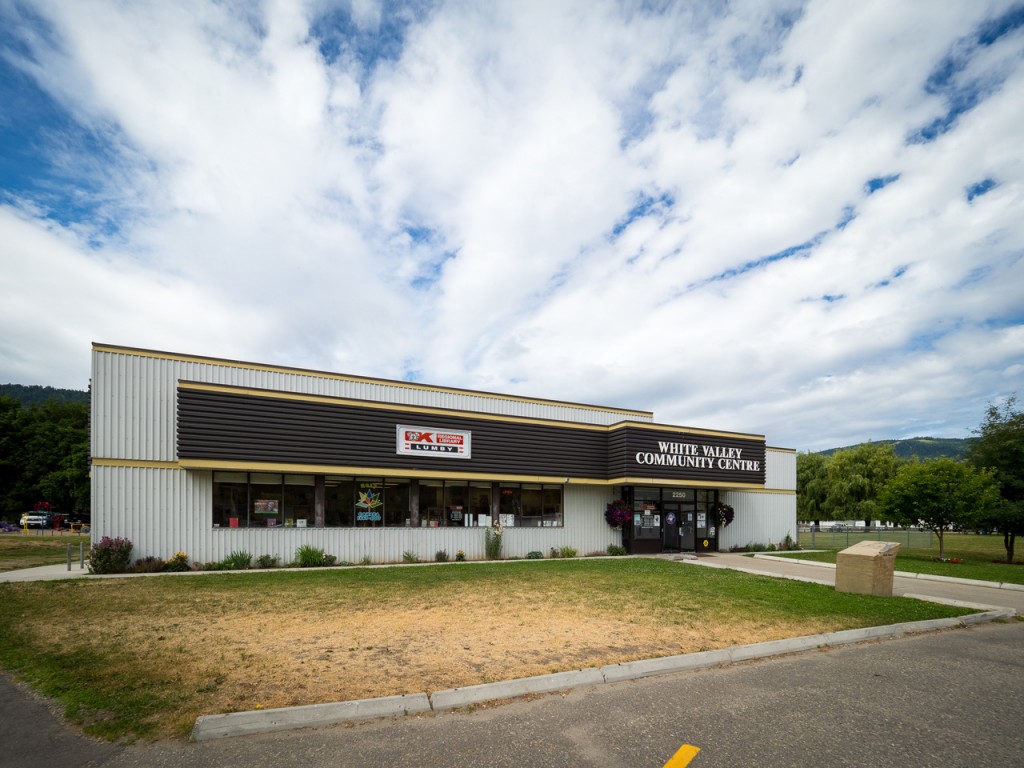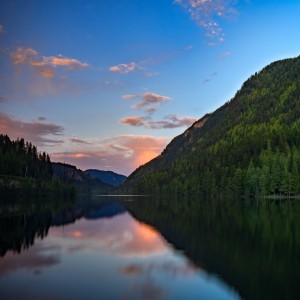Lumby Days Mural, photo by Dale Eurich
E.F. Schumacher’s book, “Small is beautiful – A Study of Economics as if People Mattered” certainly applies to the Village of Lumby. With 1,833 residents, Lumby is indeed the smallest municipality in the Shuswap, but it may also be one of the friendliest. It is a close knit, outdoors oriented community that has many of the services available in larger centres, including an impressive parks and recreation program.
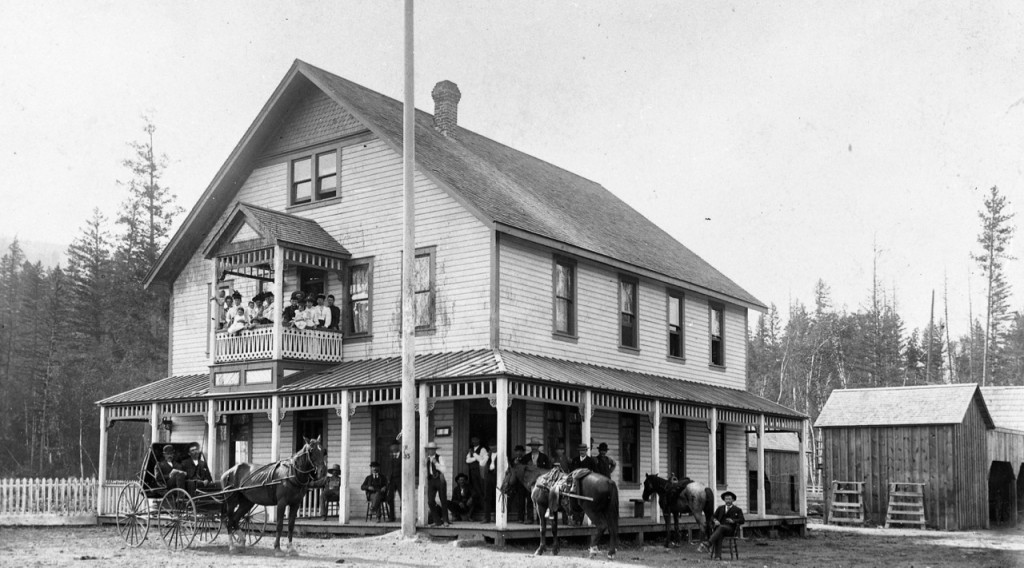
The Rams Horn Hotel was the centre of early Lumby, photo courtesy of the Okanagan Archive Society
It was the nearby natural meadows that first attracted the early settlers, many of them from Quebec; to the area they called the White Valley, named after one of the earliest settlers, George LeBlanc. Although agriculture has long been the mainstay of the local economy, forestry was and continues to be the major employer. As well, the village is becoming a bedroom community for Vernon, just 20 minutes away.
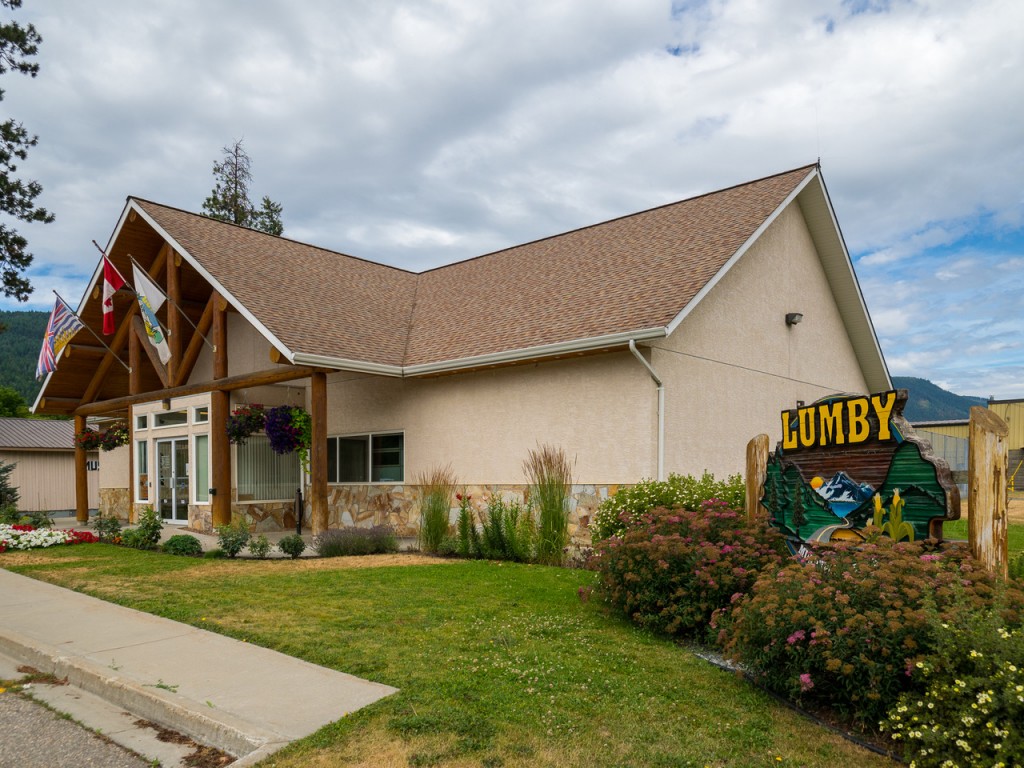
Village office, photo by Dale Eurich
Almost all of Lumby’s public buildings, including the schools, city hall, community centre and library, skating arena and curling club are located in the centre of the community adjacent to the beautiful Whitevalley Community Park where there is also an outdoor swimming pool and skate board park.
Lumby skate park, photo by Dale Eurich
A colourful attraction for visitors and residents are the 32 historical murals that adorn many of the buildings in the village depicting themes such as the early pioneers, logging, farming and the salmon.

Lumby mural photo by Clint Whitecotton
It could be said that one way to judge a community is by the strength of its volunteer organizations and Lumby has many successful groups. The Whitevalley Community Resource Centre has been serving Lumby and the local area with social programs since 1989. In addition to counseling services, the centre provides programs for seniors, students and young parents. During the summer, residents and visitors appreciate the weekly Lumby market held every Saturday where they can shop for locally produced vegetables and crafts.
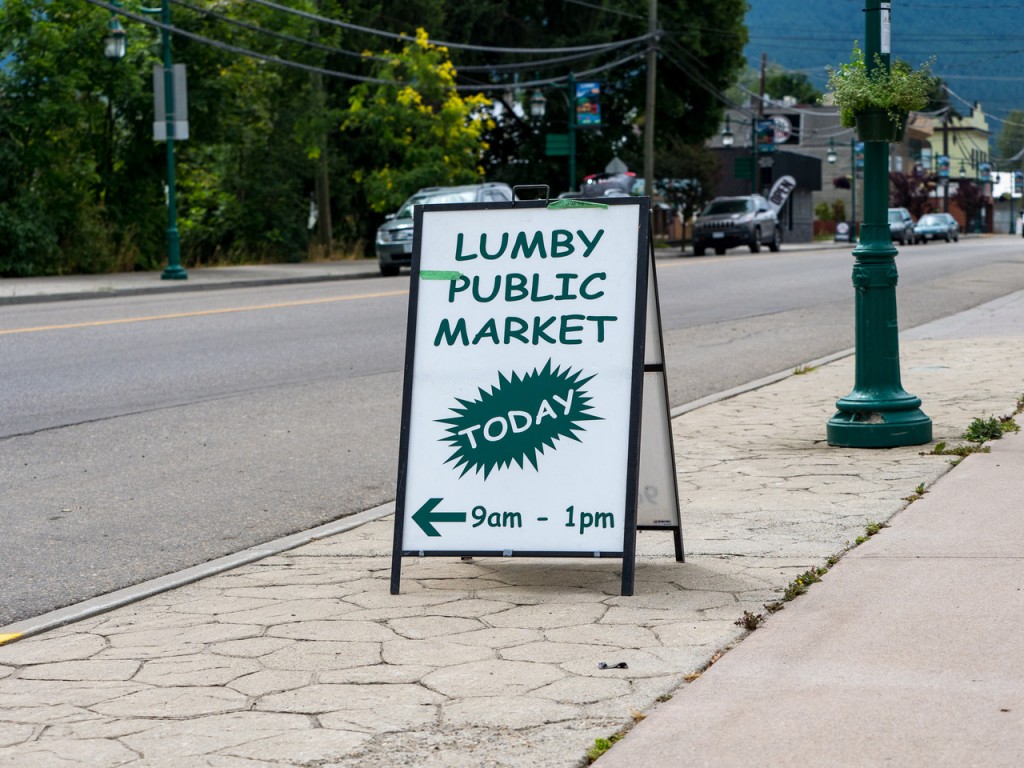
Photo by Dale Eurich
There is no shortage of cultural activities as well in Lumby, including dance and art classes and musical theatre at the community centre. The Monashee Arts Council supports local artists, sponsors events including the annual Festival of the Arts and operates a gallery. Another group, the Lumby Arts Cooperative also supports local artists and operates the Village Gallery that markets locally produced, original arts and crafts.
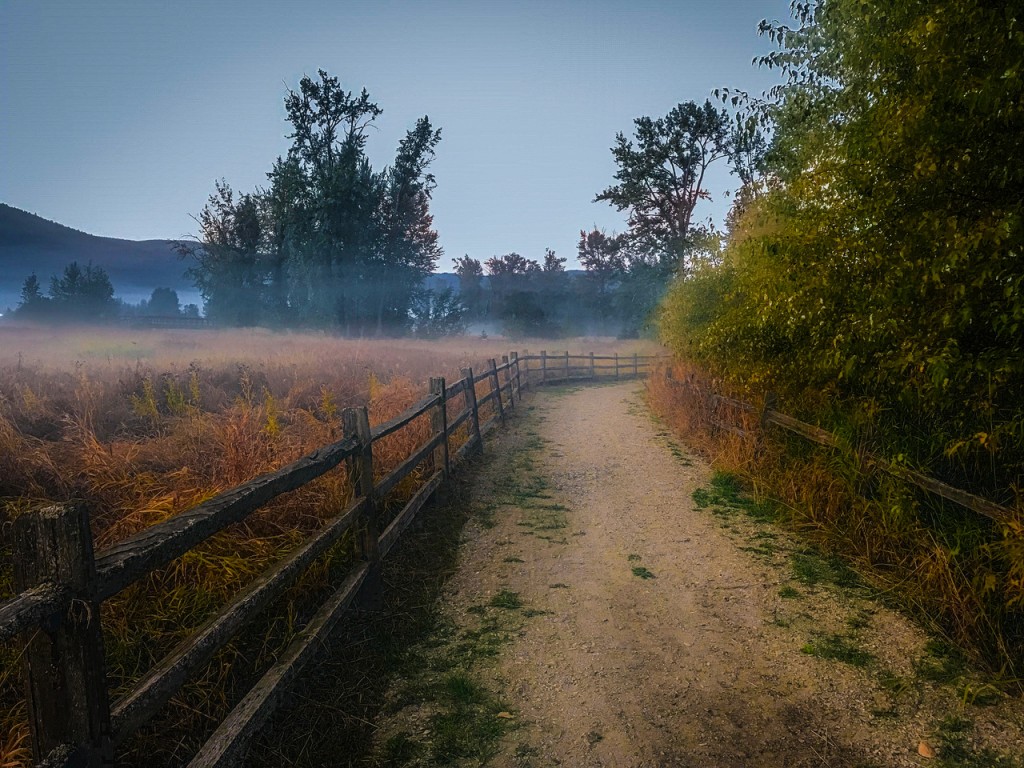
Salmon Trail, photo by Dale Eurich
The key recreational feature in Lumby is the eight kilometre long series of Salmon Trails that follow Bessette and Duteau Creeks, which are the easternmost spawning grounds for coho and Chinook salmon. Interpretive signs and activities help make the hiking interesting and educational and during the summer the Lumby visitor Centre provides student trail guides for visitors.
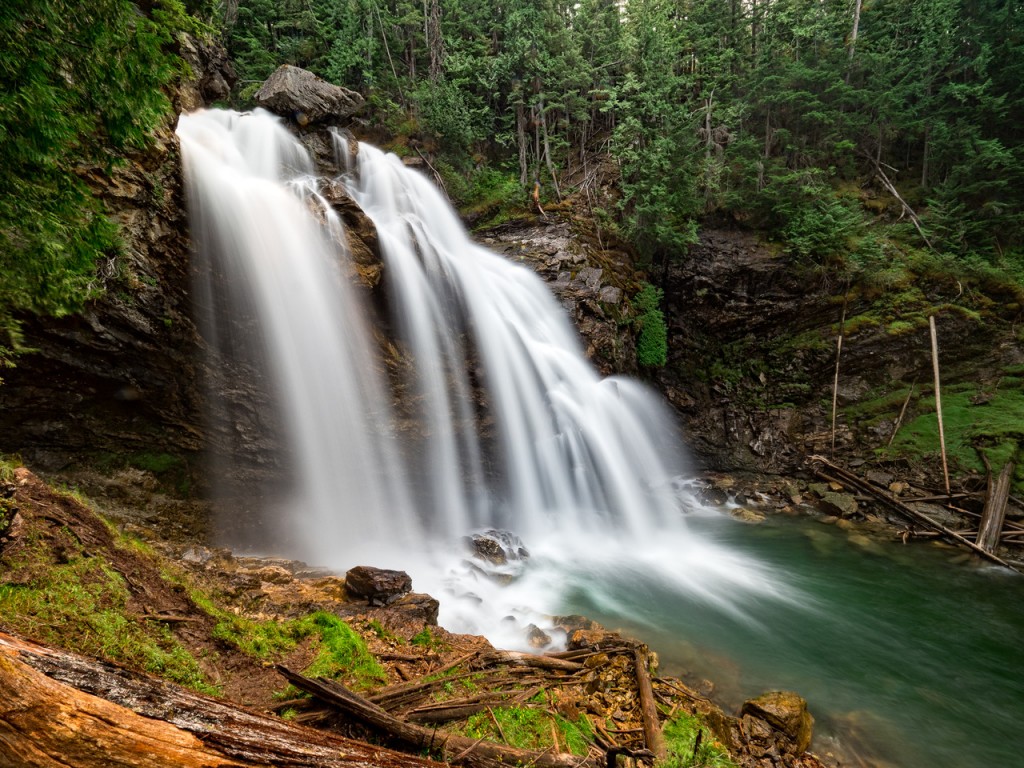
Rainbow Falls, photo by Dale Eurich
Lumby is often billed as the gateway to the Monashees, as it is an excellent starting point for outdoor adventures in the nearby mountains and lakes. To the north is the scenic Mabel Lake, a favourite destination for swimmers, fishers, campers, boaters and paddlers. To the south is Echo Lake Provincial Park, where families appreciate the beaches and the fishing. More adventures can be found in nearby Monashee Provincial Park, where the magnificent Rainbow Falls delight visitors and backpackers enjoy alpine hiking to Peter’s Lake and Mount Fosthall.
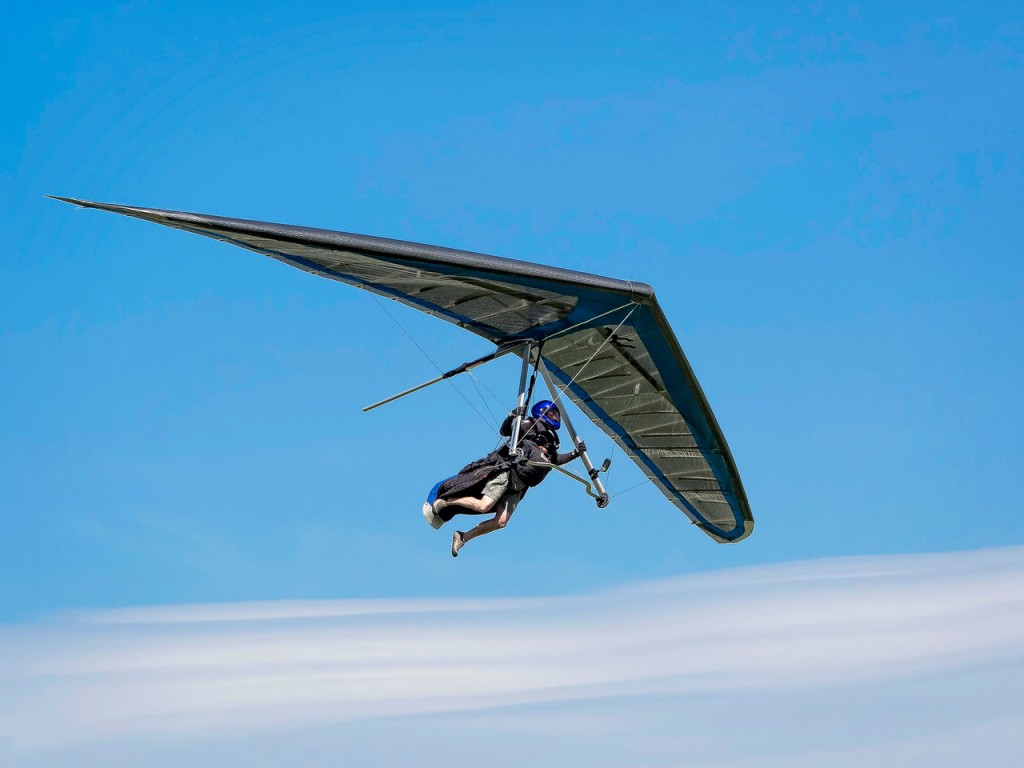
Photo by Dale Eurich
One only needs to look up to the skies to see the Lumby Air Force practice their recreational pursuits, as these fearless hang gliders and paragliders utilize the ideal conditions for flying in the area. The flying group began in 1975, when they hosted their first hang gliding competition. There are a number of launch sites from local mountains and there is no shortage of large fields for landing.
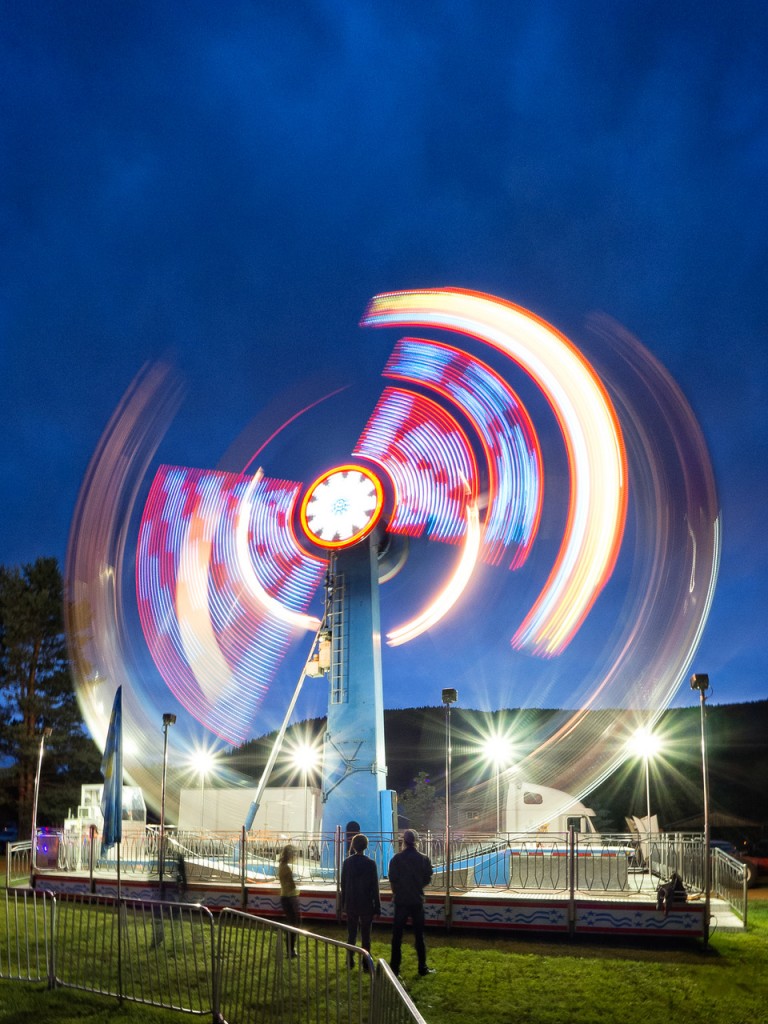 Lumby Days, photo by Dale Eurich
Lumby Days, photo by Dale Eurich
Early in June is a great time to visit the community and enjoy Lumby Days, which is hosted yearly by a volunteer organization. In addition to the parade, there are historical displays, arts and crafts, hang gliders and paragliders, car shows, trade booths, games and events for kids, and live music on the stage. Camping is also available all summer long at the Lumby Lions Campground located at the head of the Salmon Trail.
Photo by Dale Eurich
POSTSCRIPT
I just scratched the surface of all there is to tell about Lumby and the White Valley. The agricultural value of the land is very high and there are some beautiful farms in the valley. As the “Gateway to the Monahsee,” Lumby is a great starting off point for adventures in the mountains, especially in the winter. There are numerous ski lodges nearby for backcountry skiing, heli-skiing and cat-skiing. Another great place to visit nearby is the Wilsey Dam, where there is a lovely park. And downstream of the dam, the Shuswap River is great to paddle.
MORE PHOTOS:
Community Centre, photo by Dale Eurich
photo by Dale Eurich
